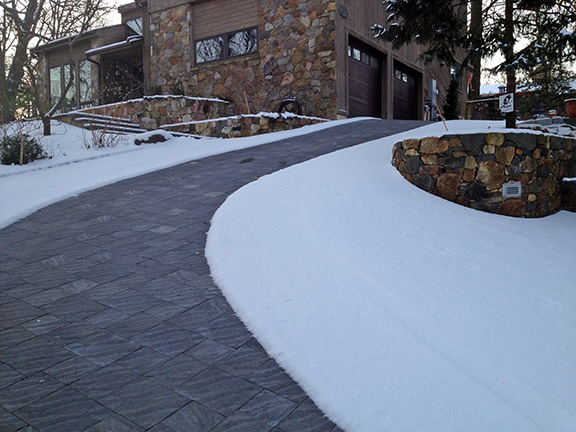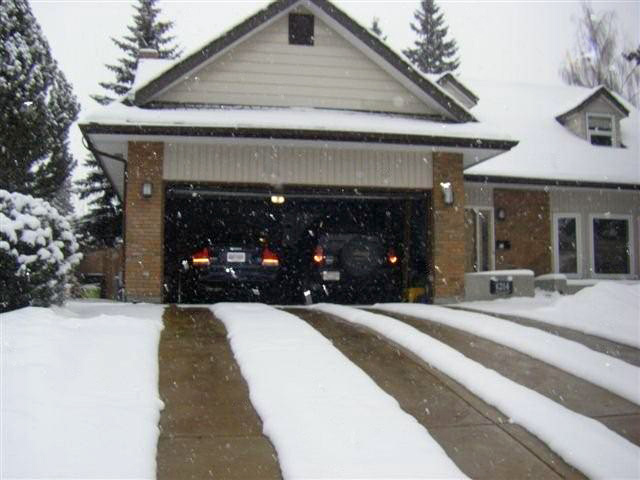| SUN VALLEY, ID CLIMATE FACTS AND STATISTICS |
| Information provided by Best Places.net and onthesnow.com. |
| Sun Valley's coldest month is January when the average low temperature is 7.6°F. |
| Average annual snowfall is 173 inches. |
| Average annual rainfall is 13.7 inches. |
| Heaviest winter snowfall: 359 inches in 2016-2017. |
| Heaviest monthly snowfall: 136 inches in 2019. |
| Average winter temperature December thru March 1 is 32.6 degrees Fahrenheit. |
| On average, there are 205 sunny days per year in Sun Valley. |
| January is the snowiest month of the year, averaging 41 inches. |
At an elevation of 5,945 feet, the Sun Valley area gets its fair share of snow every winter. Wouldn’t it be nice to wake up to a clear driveway and sidewalks after each snowstorm? Radiant snow melting systems make this possible. Heated driveway systems are fully automated and energy efficient, so they only operate when needed. And because the systems have no moving parts, electric heated driveways are also maintenance free.
Automated driveway heating systems consist of a heating element, a small controller, and an activation device (snow sensor). The advanced snow sensor is capable of detecting temperature and precipitation. When precipitation is present and the temperature is below the adjustable set point of the sensor (usually set at 38°F or 39°F), it signals the controller (or contactor panel). (The contactor panel is typically mounted on a wall in the garage.) Power is then sent from the contactor panel to the heat cable embedded in the driveway, warming the surface and preventing any snow accumulation.
Radiant snow melting systems from Warmzone have been installed in a number of applications throughout Northern America. The systems have been commonly used to heat driveways, sidewalks, loading ramps, bridges, runaway truck ramps, commercial entryways and parking areas, steps and more. These versatile systems are also easy to customize. Systems can be tailored to not only meet the specific snow melting needs, but also to accommodate the owner’s budget.

There is a variety of popular options for homeowners. For example, instead of heating the entire area of the driveway, radiant heat can be installed to heat just an 8-foot wide strip in the middle. Or two 24-inch wide heated tire tracks can be installed. This is a very popular and affordable option for many homeowners.
ClearZone snow melting systems are among the most popular. These proven systems feature rugged heat cable, an activation device and controller / contactor panel. The heat cable is first laid out over the area to be heated. Next, the cable is secured to the remesh with zip ties (for concrete applications). The remesh is typically supported by Mesh-Ups so that the remesh (and cable) does not rest on the ground. Next, the concrete is poured. The cable should be about 2 inches below the surface of the driveway.
The snow sensor is typically installed on a post or arm extending from the roof. (It must be exposed to the elements from all sides.) When the sensor detects precipitation and the temperature is below 38°F, it signals the control panel, typically mounted in the garage. The controller then sends power to the embedded heat cable to warm the driveway. These fully automated systems also feature manual override capability, so if snow drifts form on the driveway the system may be activated to keep the area clear.
Warmzone snow melting systems are designed to ASHRAE standards. In other words, your snow melting system is designed according to uniform standards to cope with weather specific to your area. That way customers can be assured that their system will perform as intended. You see, a snow melting system in Madison, Wisconsin is not going to be the same as a system designed for Tehachapi, California. Each system is designed to deal with the climate conditions specific to that area.

Radiant heated driveways are easy to customize, so Sun Valley homeowners have many options when it comes to installing a snow melting system. Instead of heating an entire driveway, homeowners can install a system to only heat an 8-foot wide strip in the middle of the driveway, or two 24-inch wide heated tire tracks can be installed. Systems can also be installed to simply heat the small “problem” areas, such as inclines, steps, or sections of a driveway that are constantly shaded from sunlight.
Warmzone has been a radiant heat industry leader for over a decade. In addition to offering a vast selection of radiant heat solutions, Warmzone includes unmatched customer support services. These services include free installation training, technical support, and professional system design and layout services. The installation training is available via video conference, whereby installers can participate with their personal instructor in real-time training and learn all the aspects of their installation. Real-time technical support is also available to installers during the installation. Also, Warmzone carefully designs each custom radiant heat system, which serves as a road map for installers and electricians.
To learn more about the free installation training, or to schedule an online training course, call 801.948.7545 today. The courses are available online, and are typically completed in less than an hour. To learn more about Warmzone's products and services, call and speak with a friendly radiant heat expert today, at 888.488.9276.